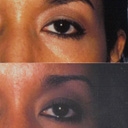Gynecomastia in New York
Few conditions are more challenging for men to bear than gynecomastia – literally, “woman-like breasts.” In our consultation room in New York, male breast reduction candidates tell us about enduring years of embarrassment, ridicule and curtailed activities. That’s why it’s unfortunate that so many men suffer with gynecomastia. It’s estimated that about a third of adult males have enlarged breasts, and the percentage is even higher for males who have experienced the condition at some point in their lifetime.
 Visit Dr. Jacobs' Website Dedicated to Gynecomastia
Visit Dr. Jacobs' Website Dedicated to Gynecomastia
The basic cause of enlarged male breasts is hormonal imbalance, therefore, likely times for gynecomastia to occur is at birth, adolescence and middle age when hormone levels are out of whack. But there are other triggers and contributors as well, including certain prescription drugs, medical conditions and street drugs and alcohol.
If you have gynecomastia, today called “man boobs” and “moobs,” schedule a consultation with Dr. Elliot Jacobs. He’s one of the most experienced gynecomastia surgeons in New York and across the nation. He is often called on by the media to speak on the subject, and he has developed an entire website devoted to all aspects of male breast reduction, including a very large gallery of before and after gynecomastia photos and an extensive FAQ. Visit www.gynecomastianewyork.com to learn more.
Our Male Breast Reduction Philosophy
As a young Manhattan plastic surgeon thirty years ago, Dr. Jacobs was dismayed by the limited options for men suffering from gynecomastia at the time, and by the all-too-often poor results for those who braved cosmetic surgery. From that point on, he dedicated a portion of his practice to working with men with enlarged breasts, and he designed his own instruments to help perfect the male breast reduction procedure. Today he has more than two thousand surgeries to his credit, performing male breast reduction for New York and New Jersey patients, and for men from other states and countries through his fly in for surgery program.
The goal Dr. Jacobs and his entire staff will have for you is a masculine, contoured chest that’s compatible with the rest of your torso with a minimum of scars. They also pledge that you’ll have a relaxed, rewarding experience from the moment you make contact with them through your final follow up appointment.
Gynecomastia Surgery Overview
Dr. Jacobs’ decades of working with gynecomastia patients have shown that most cases involve a combination of breast gland and fat. Breast gland growth typically starts under the nipple/areola complex and occasionally stops there. More often, it spreads out and intermingles with fatty tissue. Therefore, most patients require a combination of gland removal and fatty tissue removal – with scalpel and liposuction – for an effective, natural looking result.
Both art and science come into play with male breast reduction surgery. For each individual patient – heavyset men, adolescents whose physique hasn’t fully matured, bodybuilders and average guys – knowing how much tissue to remove and how much to leave in place is essential. In addition, the plastic surgeon must consider the entire torso and know when a little supporting liposuction is needed to shape nearby areas.
With these factors in mind, your surgical plan will be unique. But if you’re like most patients, your male breast reduction will take place in Dr. Jacobs’ fully accredited ambulatory surgical suite. An M.D. anesthesiologist will administer twilight sedation. Dr. Jacobs will make tiny incisions at the side of your chest and use his instruments to remove fat and breast tissue, re-contouring your chest and re-draping skin. If additional breast tissue under the areola must be addressed, Dr. Jacobs will make a small incision at the edge of the areola and remove just enough to give you a smooth, taut chest. Your scars will be virtually unnoticeable after healing.
You’ll return home with prescription pain medication and an antibiotic to guard against infection. After taking it easy for a few days, you can begin returning to light activities and non-strenuous work. You’ll wear a compression garment to help keep swelling down. You should be very pleased with your results after initial swelling and bruising subside, in just a few weeks, and delighted as your new contours emerge over the course of three to six months.
Male breast reduction surgery has come a long way in three decades, but in reality, there are few board certified plastic surgeons who perform hundreds of these procedures a year. Dr. Jacobs is well known for his work with patients with gynecomastia in New York, New Jersey and across the U.S. Get in touch with him online or call his Park Avenue office at 212-570-6080.
Gynecomastia FAQ
How can I tell if I have gynecomastia?
If you have excess tissue on your chest, you have gynecomastia. In a way, it’s pointless to worry too much about whether it’s made up chiefly of breast gland or fat; chances are both types of tissue are present. And if it has persisted for one to two years, it’s a good bet it will not disappear on its own.
What’s the right age for male breast reduction?
Gynecomastia surgery can be performed on a young man just about to enter the teen years and on men in their sixties and beyond. The most important factors are stable gynecomastia, good health and a positive outlook.
Is there any treatment other than surgery for gynecomastia?
When adolescents first develop gynecomastia, it’s a good idea to wait a few months to a year or a little longer to see if the condition subsides on its own. For persistent gynecomastia at any age, there’s no recourse other than plastic surgery. Pills, creams, exercise and diets don’t do anything other than reduce the size of your wallet.
Is the risk of cancer greater for those with gynecomastia?
Studies have shown that men with gynecomastia have about the same risk for male breast cancer as those without man boobs.
I have many questions, where can I learn more?
Please visit www.gynecomastianewyork.com, our website dedicated to gynecomastia. There we have a FAQ with almost 50 common questions answered. You should also consider joining www.gynecomastia.org, a site full of resources including a forum for patients to talk with each other and participating plastic surgeons who will answer questions.







